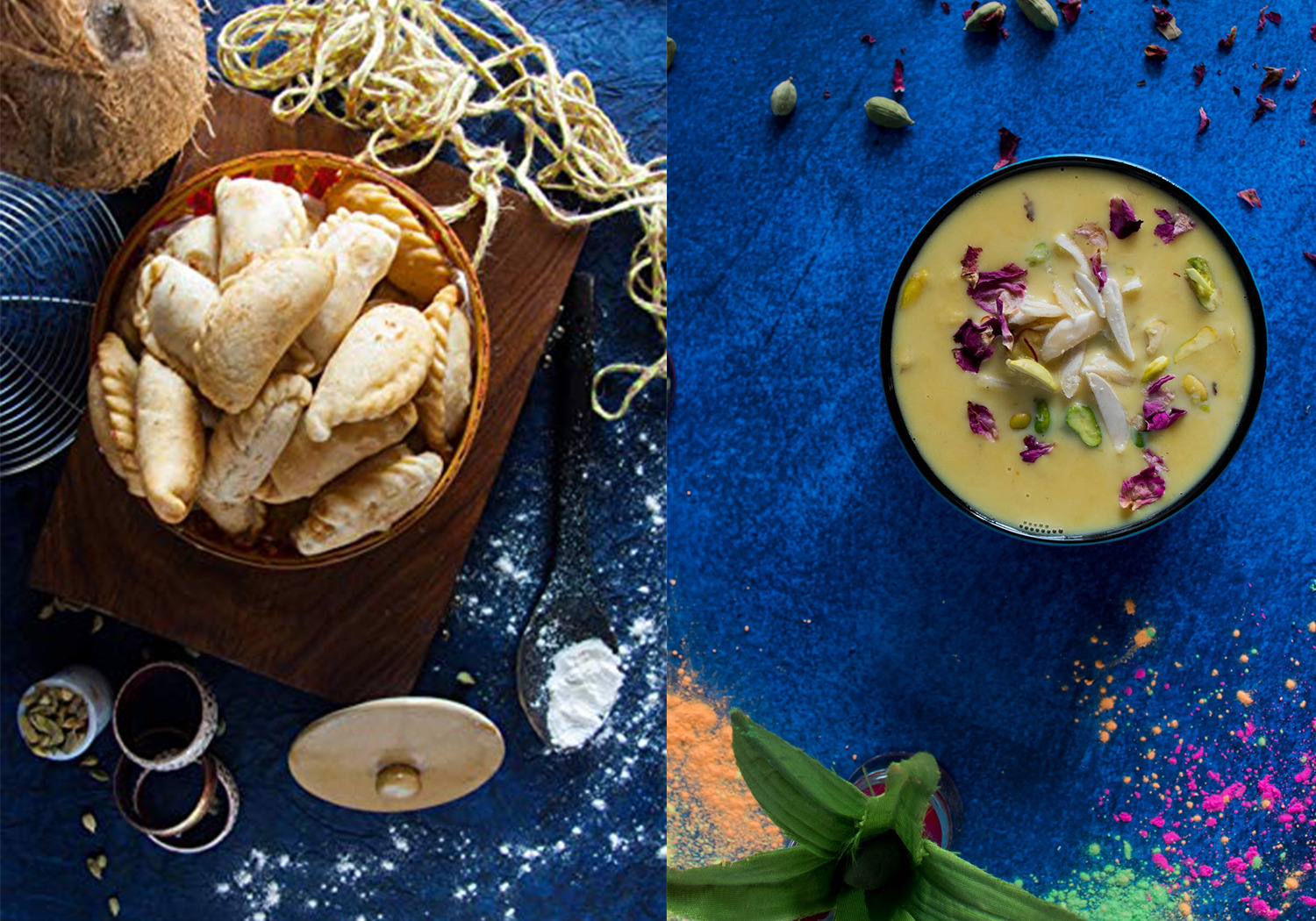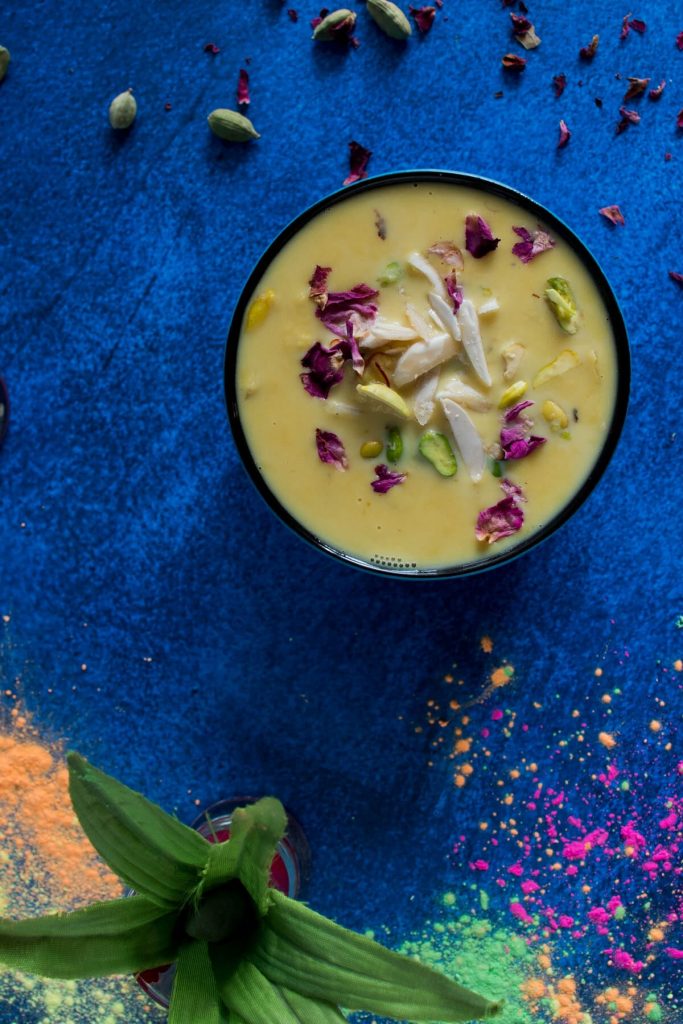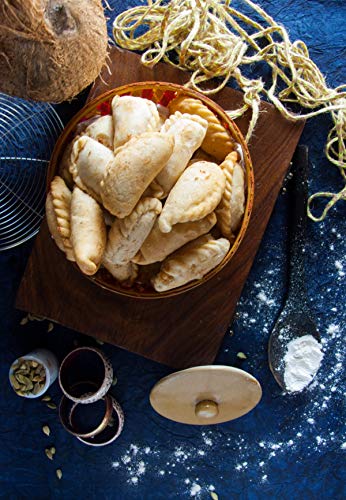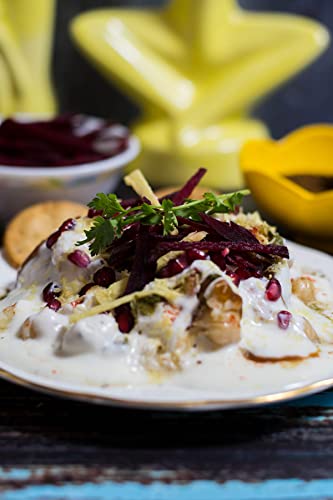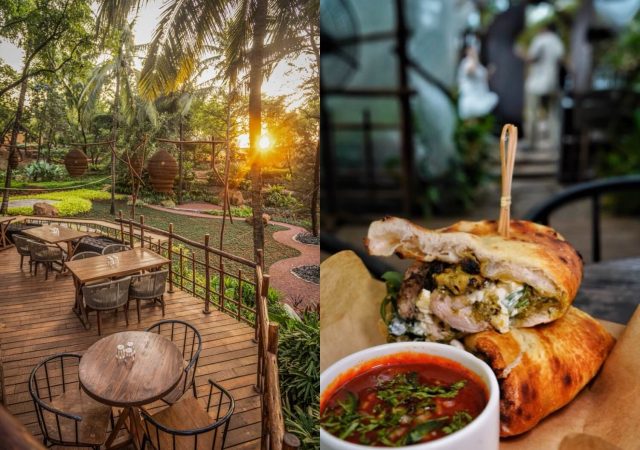Diwali is incomplete without the chatpata namkeens and the flavourful mithais, isn’t it? One of the most cherished aspects of this festival is the delectable array of traditional foods and the looming aroma of freshly made meals! Sharing these homemade delicacies with your loved ones, neighbours and friends is what makes this festival even more special. This year, serve your loved ones some much-loved Diwali specials with these easy-to-make recipes from ‘The Tastes of India’ Podcast on Audible! From the sweet mawa gujiya to the rich and creamy kesar lachada rabri, these recipes offer a variety of tastes to satisfy every palate.
Kesar Lachha Rabri
Ingredients:
- Whole milk / full-fat milk: 2 litres
- Sugar: 4-5 tbsp or add as required
- Cardamom powder: 1 tsp
- Saffron strands a pinch
- Almonds blanched and sliced: 4 tbsp
- Pistachios blanched and sliced: 4 tbsp
Method:
- Soak almonds and pista in hot water for about 20-30 minutes. Drain the water.
- Remove the peels from the nuts. Slice, sliver, or chop them and set them aside.
- Pour the milk into a heavy-bottomed pan and bring it to a boil over low to medium heat.
- Boil the milk, stirring in between until the milk starts to form a layer of cream (malai) on top.
- When you notice that the cream floating on top, then gently move the cream layer with the back of a spatula, bring it towards the side of the pan and stick it to the pan. Keep the heat to a low and continue to simmer.
- Keep on simmering the milk like this and collecting the cream layer on the sides of a pan, if you want lachhedar rabdi, else you can keep scraping and putting the milk solids back in the milk.
- This process of collecting the cream layer must be repeated several times.
- Also, make sure that you stir the milk gently in between so that the milk does not get burnt from the bottom. (keep in mind that, if you do too much stirring, then you won’t get the layers of cream in the rabri.
- Once the milk is reduced to half, add saffron strands and cardamom powder. Stir gently.
- After adding saffron, the colour will change gradually to a beautiful yellow colour.
- Keep collecting the cream and bringing it to the sides of the pan.
- And when the milk gets reduced to 1/3 of its original quantity, add sugar and mix well.
- Let it simmer for another 10 minutes on low flame or until it’s reduced to ¼ of the quantity.
- Now scrape off the entire cream layer as well as dried milk solids and add to the thickened milk. Stir gently.
- Switch off the flame and let it cool down. (This process usually takes 2 hours).
- Now add the sliced almonds and pistachios. Stir gently again. (Save a couple of the blanched and slivered nuts aside for garnishing)
- You can serve rabri hot, warm, or at room temperature. In case you want to have it chilled then, keep the Rabdi in the refrigerator for at least 2-3 hours before serving.
- Garnish with chopped nuts and saffron strands before serving.
Mawa Gujiya
Ingredients:
For Khowa:
- Milk: 2 litres (You get about 400 gm made from 2 litres of full cream milk)
For Dough:
- All-Purpose Flour maida: 3 cups
- Oil (can also use ghee): 1/2 cup
- Water
For Sealant
- Maida: 2 tbsp
- Water: 3 tbsp
Others:
- Semolina roasted: 1/2 cup
- Coconut grated: 1/2 cup
- Sugar: 1 cup
- Elachi: 4, powdered
- Ghee/Oil for frying
Method:
Khowa/Mawa:
- Firstly, Pour the milk into a large thick-bottomed pan and place the pan on the stovetop.
- Let it boil first on a medium flame. Now lower the flame and simmer the milk. Stirring at regular intervals.
- Stir the milk with a spatula, whenever you see the frothing. Scrape the milk solids from the sides and add them to the milk.
- The milk will continue to reduce and thicken as it is being simmered on a low flame.
- There will be a stage when the reduced milk will resemble rabri (an Indian sweet). Continue to simmer and stir.
- At the end, when the milk has reduced, you will notice bubbles bursting in the reduced milk.
- At this stage keep stirring so that the reduced milk doesn’t get browned or burnt.
- And when you see there are no bubbles in the reduced milk, it’s time to switch off the flame.
- So to make this mawa/khowa from milk, it usually takes about 2 hours.
- With a spatula, scrape the milk solids from the sides and take them out in a bowl. Let it cool down.
Dough:
- Take maida and ghee/oil in a bowl.
- Mix ghee and maida using your hand for at least a minute until the mixture looks crumbly.
- This step is necessary to make the crisp outer layer.
- Knead a soft dough using water. Cover and keep aside.
Sealant
- Mix maida and water in a bowl. Set aside.
Stuffing:
- Add homemade khowa, roasted suji, grated coconut, sugar, and cardamom powder in a bowl. Mix well. Set aside.
Gujiya
- Knead the dough for a minute. Divide the dough into small equal balls. Cover with a cloth and set aside.
- Take one ball and roll it out into a 4-5 inch disc. Place a spoonful of filling or as required on one side of the disc, leaving space at the edges.
- Apply the flour and water mix (sealant) to the edges of the disc.
- Carefully, bring one edge over the other to combine and form a half-moon shape. Slightly press the edges with your finger. (You can use a karanji cutter to smoothen the edges)
- Now, gently, twist the sealed edges to make a pleat. Similarly, make the remaining gujiyas.
- Heat enough ghee/oil in a deep pan. Ghee should be moderately hot. Gently slide in and deep fry them until slightly golden and crisp. Similarly, fry all of them.
- Take them out onto an absorbent paper.
- The Mawa Gujiya is ready . They can be stored in a clean airtight container.
Notes:
- For making the Mawa, take a wide thick-bottomed pan. If the surface area is more, the whole process will be quicker.
- Also, make sure that the pan is deep so that the milk does not fall out while simmering. If you have deep-bottomed non-stick Kadai, then that is suggested.
- Always allow the dough to rest for 30 minutes for best results. Ensure the dough is covered with a clean damp kitchen towel all the time to avoid drying.
- At times, while frying, one of the Gujiya breaks, and the filling starts to stick to others. So all you can do is strain the ghee using a metal strainer and then use it for frying. (so the next batch does not get spoilt).
- While making the filling, always add sugar once the mawa cools completely. Don’t reduce the amount of ghee(moyan) while making the dough. If the amount of ghee is less, the outer layer will not turn crispy. If the ghee is too much, the outer layer may break while deep frying.
- Avoid frying gujiya on a very high flame otherwise, they will not turn crispy.
- Do not overstuff the gujiya otherwise, the stuffing mixture will come out in the oil while deep frying. Store gujiya in an airtight container and consume within 3-4 days.
Dahi Bhalla Papdi Chaat
Ingredients:
Bhalla:
- Black Gram Dal/Urad Dal: 1 cup, soaked for 4 hrs
- Ginger: 1 tbsp
- Salt as per taste
- Oil to deep fry
Sweetened Curd:
- Chilled curd: 3 cups or as needed
- Powdered sugar: 3/4 cup or as needed
Bhalla Papdi Chaat:
- Bhalla: 8 nos
- Crisp Papdi: 12 nos
- Salt to taste
- Potatoes medium (boiled and chopped): 2 nos
- Boiled chickpeas: 1/2 cup
- Green chutney: 1/4 cup
- Dates and tamarind chutney: 1/4 cup
- Roasted cumin powder: 1 tsp
- Chaat masala: 1/2 tsp or as per the taste
- Red chilli powder: 1/2 tsp or as per the taste
- Fresh coriander leaves: 2 tbsp
- Nylon Sev as needed
- Pomegranate: 2 tbsp
- Red Chutney (Optional and as per taste for those who like it more spicy)
Method:
Bhalla
- Grind the black gram dal with ginger paste with very little water to get a smooth batter.
- Add salt and beat the batter with your fingers against the wall of the bowl. Add a little hot oil and beat once more.
- Drop a dollop of batter in water, if the batter is floating, means the batter is ready to fry.
- Heat oil and fry small balls of the batter till golden brown.
- Immediately put them in a bowl of lukewarm water and let it soak for 8-10 minutes.
- Squeeze excess water from each bhalla and keep it aside.
Bhalla Papdi Chaat
- Add salt and sugar to yoghurt and whisk till smooth. Keep it in the refrigerator till use.
- Arrange the papdis on a plate. Place bhallas and some potatoes on each papdi.
- Put some boiled chickpeas over the potatoes and cover with chilled yoghurt.
- Pour a little green chutney and sweet tamarind chutney. For those who like it more spicy, add red chutney.
- Sprinkle a little cumin powder, chaat masala, red chilli powder and salt.
- Garnish with coriander leaves, sev and pomegranate seeds and serve immediately.


